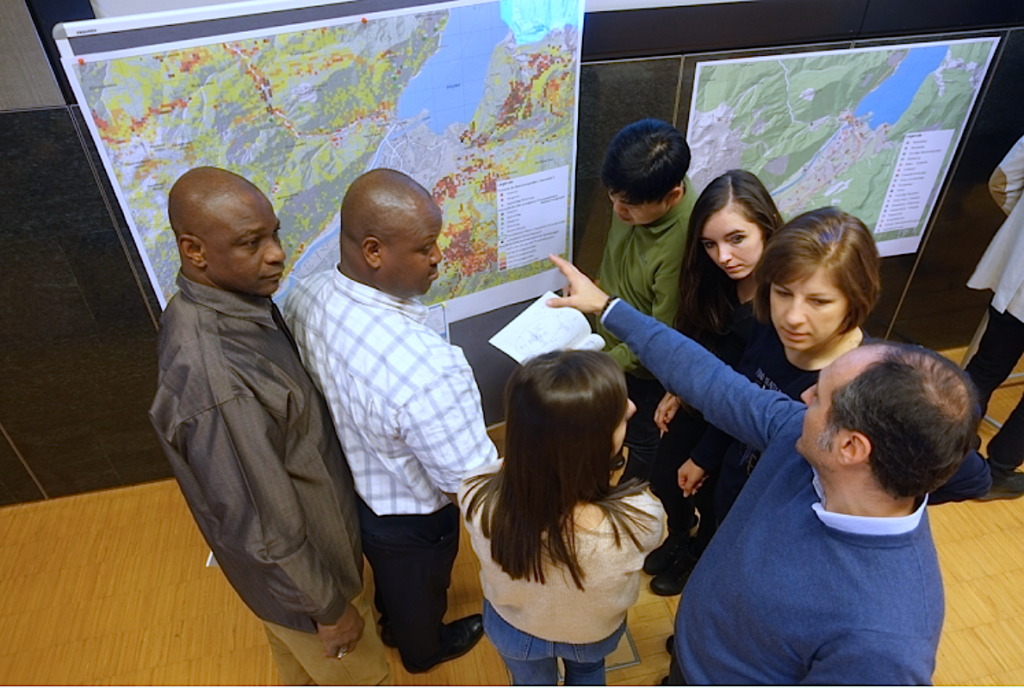Traiskirchen, Austria — Imagine a nuclear emergency triggered by another emergency, such as a natu- ral disaster like an earthquake, volcanic eruption, or
tsunami. Or, imagine a tropical cyclone, hurricane or civil disturbance leading to a radiological emergency. Preparing to respond in complex emergency scenarios is what participants learned to do at a recent course on the topic, the first-ever such course by the IAEA, offered in cooperation with Austria’s Civil Protection School in Traiskirchen, near Vienna.

“It is unlikely that a radiological event will be affected by an extreme natural disaster, but it is a possibility we need to be aware of and ready to respond to,” said Emiliano Mingorance Sánchez, Head of the Chemical, Biological, Radio- logical and Nuclear Technical Unit at the Spanish Guardia Civil, who participated in the course.
Participants — mainly nuclear power plant operators, reg- ulators and first responders — learned about the specific requirements different response professionals need to meet to effectively respond to combined emergencies and their associated challenges. Combined emergencies amplify the challenges emergency responders must manage. During the week-long course, they analysed real case studies. One such case was the accident at Fukushima Daiichi nuclear power plant — a nuclear emergency combined with a natural emergency caused by a severe earthquake and tsunami.
GSR Part 7, or the IAEA Safety Standards Series’ General Safety Requirements Part 7, Preparedness and Response for a Nuclear or Radiological Emergency, addresses the requirements for preparedness and response to any nuclear or radiological emergency, irrespective of its cause. This includes combined emergencies.

A FLOOD AND A SOURCE
Participants were asked to come up with a response plan for a simulated emergency with a missing radioactive source, combined with a flood. The challenge? To reach a consensus on the response plan and to think of all stakeholders and institutions required.
“Ensuring effective preparedness and response to a com- bined emergency requires the development and maintenance of an all-hazards emergency management system,” said Phillip Vilar Welter, IAEA Emergency Preparedness Officer in charge of the training course. “A necessary ele- ment for such an all-hazards emergency management sys- tem is the establishment of a unified command and control system, which provides a means for effective communications, coordination, cooperation and integration of operating, local, regional and national emergency response organizations.”

The topic of combined emergencies, Vilar Welter said, became especially relevant and was prioritized by the inter- national community after the Fukushima Daiichi nuclear power plant accident. The IAEA then developed specific guidance that reflects the lessons learned from the accident.
Following this pilot course, the IAEA plans to publish an Emergency Preparedness and Response series publication on nuclear or radiological emergencies combined with other incidents or emergencies.
“After this course, I can reassess some of the procedures back home and try to influence or raise awareness of the need to adapt our norms and intervention protocols in the face of such emergencies,” Mingorance Sánchez said.
More than 50 experts from 15 countries attended the course at Austria’s Civil Protection School, a national edu- cation and training facility for radiation protection where police officers and first responders such as the fire brigade and ambulance services are regularly trained.
“Collaborating internationally in the face of transregional and international disasters is key to responding effectively in crisis situations, which is why we look forward to our continued cooperation with the IAEA,” said Almira Geosev, course host and member of the Civil Protection Training Unit of the Austrian Federal Ministry of the Interior (BMI).
Laura Gil, IAEA Department of Safety and Security
Click here to read the 2020 March edition of Europe Diplomatic Magazine


